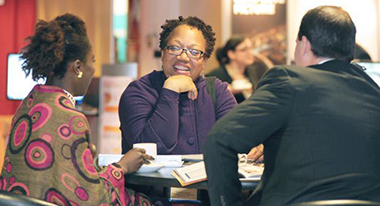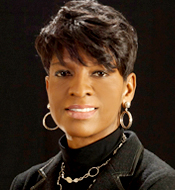An Affirming Effort to Increase Faculty Diversity
A novel recruitment approach, new school and departmental incentives, and optimism toward an enhanced campus climate drive a fresh initiative.
 |
|
The faculty recruitment practice of cluster hiring has been shown to be more appealing to candidates from underrepresented minorities, and produces a long-term result of greater retention. |
ALBANY, N.Y. (December 17, 2015) — This fall, the University reinforced its pursuit of a campus whose faculty diversity looks more like its student diversity.
Currently, the University’s percentage of “underrepresented” faculty is about nine percent, compared to 27 percent for the student population. The path to closing this gap entails a novel approach, a new methodology, and a renewed attitude that champions the benefits of a more diverse faculty for the University community.
The approach involves shifting the emphasis within departmental or program faculty search committees from merely “searching” for good candidates to actively recruiting them. “A ‘recruitment committee’ style will involve all committee members working actively to build the pool of excellent candidates from diverse populations,” said Senior Vice President for Academic Affairs and Provost James Stellar.
The Office of Diversity and Inclusion will assist in this transformation. “When units seek to fill positions they must have a recruitment plan, and indicate how they are going to do outreach, to make sure their pool will be as diverse as possible,” said Tamra Minor, Chief Diversity Officer and Assistant Vice President. “This office will offer strategies for reaching out, not only in terms of hiring, but in terms of retention.”
 |
|
Tamra Minor, Chief Diversity Officer and Assistant VP for Diversity and Inclusion |
The method chosen by the University to both enhance recruitment and increase retention of faculty members from diverse populations is called “cluster hiring.” Through this method, each recruitment committee will be incentivized to amplify the pool of candidates from underrepresented populations, because a successful ultimate “hire” will mean a second hire from that pool.
“And who doesn’t want a second additional faculty member?” said Stellar, who added that if the first year’s pool is too narrow, a search committee will be able to conduct a second search/recruitment in the next year to expand the pool of excellent candidates from underrepresented populations.
Recruitment Support
Each recruitment committee will have the services of Benjamin Weaver, Assistant Vice Provost for Academic and Faculty Affairs, to discuss outreach efforts and share best practices on recruiting faculty from diverse populations. The committees will also have access to additional resources, as needed, to facilitate communication, arrange for travel, and to meet other needs in successfully recruiting excellent candidates.
Studies have shown that cluster hiring of underrepresented faculty works best in terms of retention when an overall atmosphere of campus support for these faculty is strong. A second such hire lends to the comfort level of the first, both psychologically and practically — the latter factor including the lessening of student demand for that faculty member as an advisor and/or mentor.
When successful, cluster hiring has been shown to result in high productivity, new courses, and increased research and mentoring opportunities.
All levels of success for increasing faculty diversity through hiring are heightened by an atmosphere of openness — both before and after the hiring — said Minor. “It’s important to not diversify for the sake of diversification’s sake, but to create a campus atmosphere where we educate and expose all of our students to a rich intellectual experience,” she said. “We know you don’t get that by just interacting with one group of faculty.”
She offered mentoring as an example. “The mentoring will be positive for students of color, but the result will be an enriched experience overall, so that all can succeed and be prepared for life and a career beyond UAlbany. That’s our goal for all.”
Provost Stellar emphasized that any method for increasing faculty diversity numbers on campus must be done in a collegial atmosphere involving "an academic discussion about the issues. Cluster hiring is the method we are choosing to begin the process of having more faculty diversity at UAlbany, and I’ve seen it work elsewhere. But we’re not wedded to it. We want to have a continuing campus-wide conversation on what will work best here, and get everyone interested.”
![]() For more news, subscribe to UAlbany's RSS headline feeds
For more news, subscribe to UAlbany's RSS headline feeds
A comprehensive public research university, the University at Albany-SUNY offers more than 120 undergraduate majors and minors and 125 master's, doctoral and graduate certificate programs. UAlbany is a leader among all New York State colleges and universities in such diverse fields as atmospheric and environmental sciences, business, education, public health,health sciences, criminal justice, emergency preparedness, engineering and applied sciences, informatics, public administration, social welfare and sociology, taught by an extensive roster of faculty experts. It also offers expanded academic and research opportunities for students through an affiliation with Albany Law School. With a curriculum enhanced by 600 study-abroad opportunities, UAlbany launches great careers.


